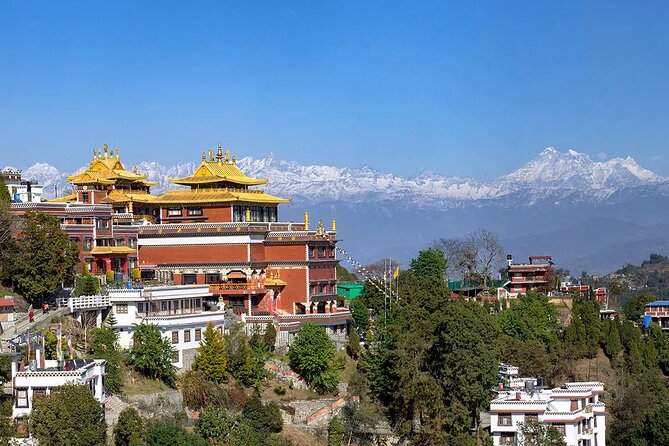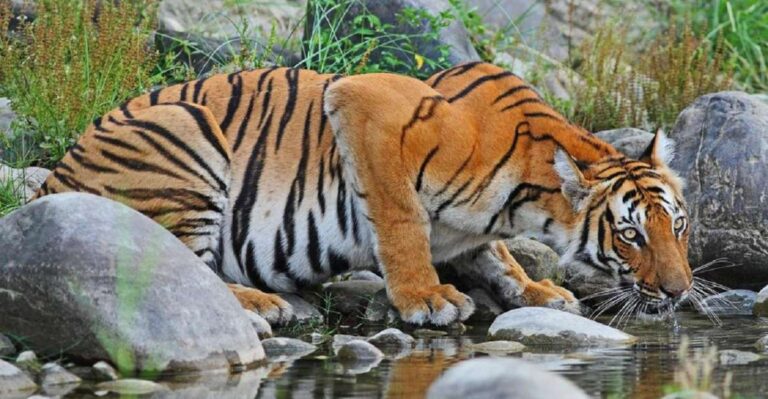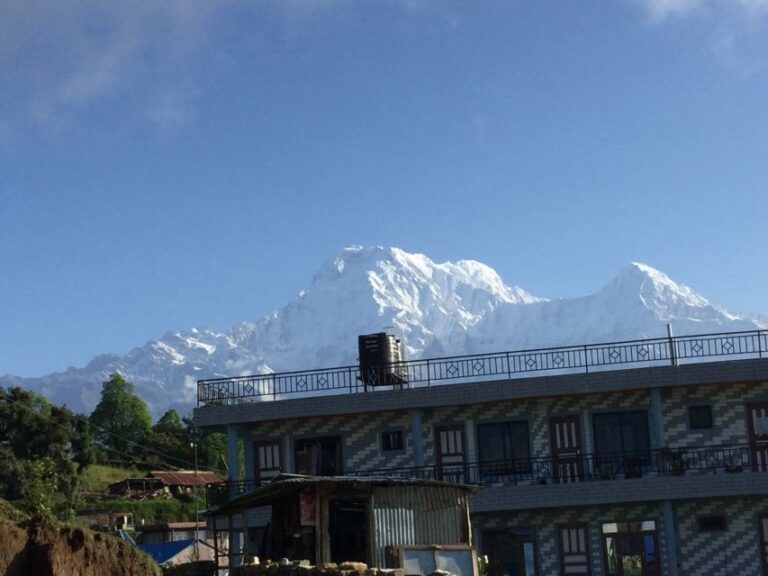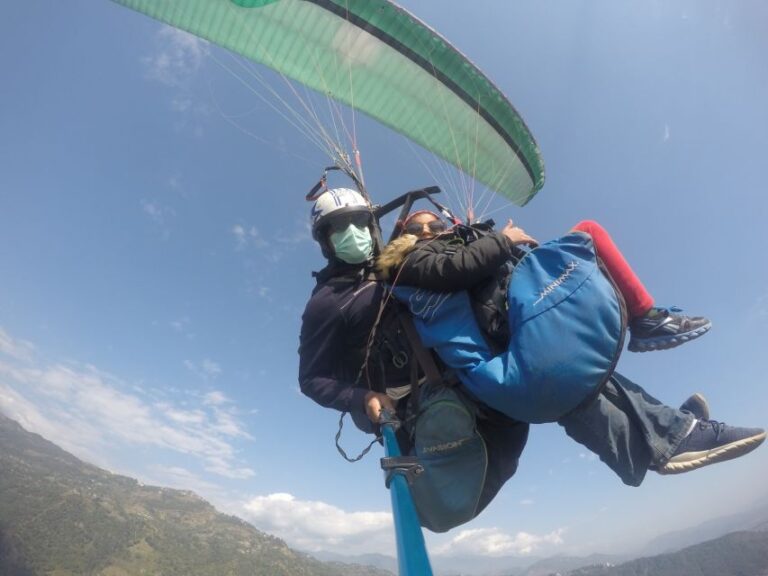Everest Base Camp Trek – 15 Days
Many are surprised to learn that the Everest Base Camp trek is not just about reaching the base of the world’s highest mountain; it is a journey that immerses trekkers in a world of diverse landscapes, rich cultures, and unique experiences.
As adventurers lace up their boots and head towards the Himalayas, they are in for a treat of a lifetime. From the moment they set foot on this iconic trail, each step brings them closer to a sense of accomplishment and wonder that can only be truly understood by those who have ventured into this legendary terrain.
Just The Basics
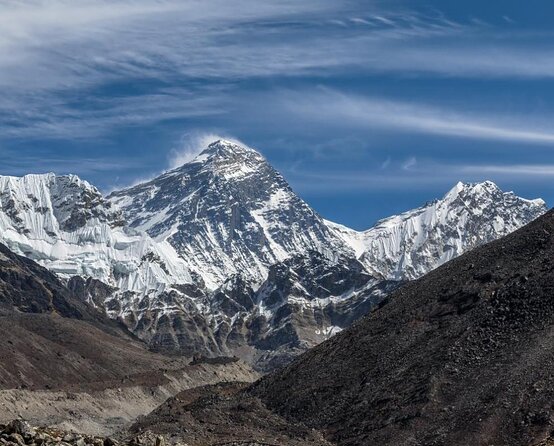
- Proper preparation, physical fitness, and equipment are essential for a successful Everest Base Camp trek.
- Optimal trekking seasons, travel insurance, and permits are crucial considerations for a safe journey.
- Acclimatization, rest days, and hydration help prevent altitude sickness and ensure a smooth trekking experience.
- Engage with local culture, wildlife, and manage communication challenges effectively during the 15-day Everest Base Camp trek.
It's also worth checking out some other tours and experiences nearby.
Trek Overview
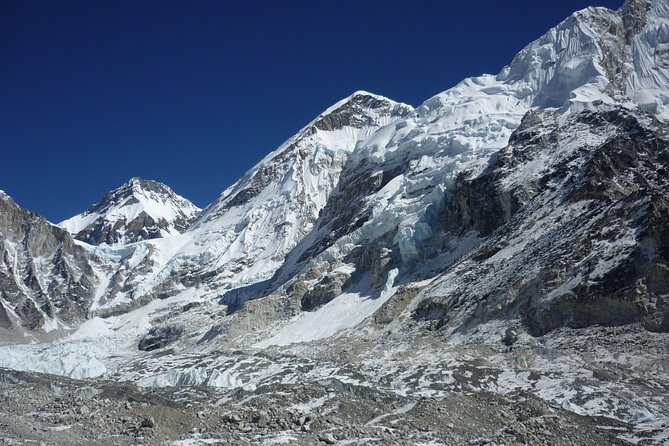
The Everest Base Camp trek, lasting 15 days, offers adventurers a challenging yet rewarding journey through the majestic Himalayas.
Trekkers must be prepared for varying weather conditions, from hot and humid at lower altitudes to freezing temperatures at higher elevations.
Physical preparation is crucial as the trek presents numerous challenges, including steep ascents, rocky paths, and high altitudes that can lead to altitude sickness if not acclimatized properly.
Proper equipment is essential, such as sturdy hiking boots, warm clothing layers, a reliable backpack, and trekking poles for stability on uneven terrain.
It’s recommended to undergo regular exercise and altitude training before embarking on this demanding adventure to ensure a safe and enjoyable experience.
Best Time to Go
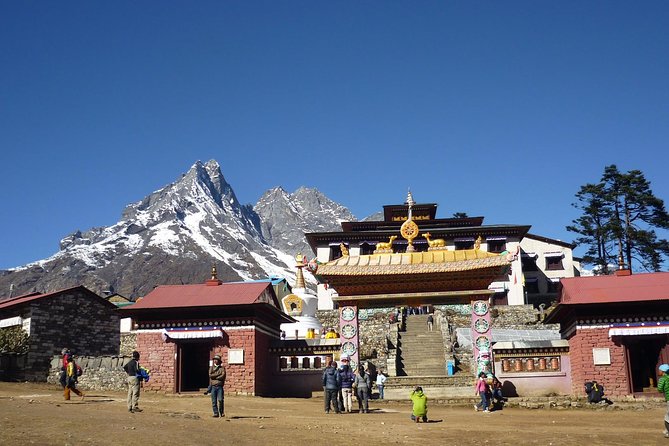
For optimal trekking conditions on the Everest Base Camp route, consider the seasonal variations carefully.
The best time to go is during the pre-monsoon season from late February to May or the post-monsoon season from late September to December. During these periods, the weather conditions are relatively stable, offering clear skies and moderate temperatures ideal for trekking.
Travel insurance is essential for this adventure, ensuring coverage for any unforeseen circumstances that may arise during the trek. It’s recommended to check the weather forecast regularly and pack accordingly to be prepared for varying conditions.
Itinerary Highlights
Optimizing your trekking experience along the Everest Base Camp route involves exploring the captivating Itinerary Highlights that showcase the breathtaking landscapes and cultural encounters awaiting adventurers.
Gear recommendations are essential for this trek, including proper hiking boots, layered clothing for varying weather conditions, and a quality backpack.
Trekking photography enthusiasts will find endless opportunities to capture the stunning vistas and unique cultural moments.
Understanding the weather conditions is crucial due to the region’s unpredictability, with temperatures fluctuating and occasional snowfall even during peak trekking seasons.
On top of that, being aware of high altitude effects is vital to prevent altitude sickness and ensure a safe journey.
These highlights not only offer a glimpse into the natural beauty of the Himalayas but also provide insight into the local Sherpa culture and traditions.
Acclimatization Schedule
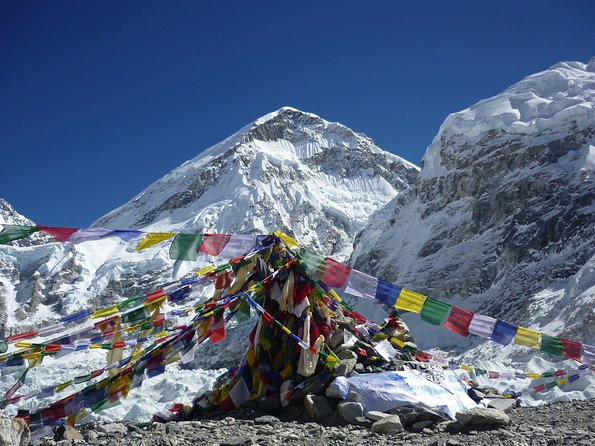
Enhancing altitude adaptation is crucial for trekkers on the Everest Base Camp route to ensure a safe and enjoyable journey through the Himalayas. Proper acclimatization benefits include reducing the risk of altitude sickness, allowing the body to adjust to lower oxygen levels, improving overall trekking performance, and enhancing the overall experience.
However, acclimatization also presents challenges such as the need for rest days, slower ascent rates, potential symptoms of altitude sickness to monitor, and the importance of staying hydrated. Trekkers must listen to their bodies, follow the recommended acclimatization schedule, and communicate any discomfort promptly to guides to mitigate risks and make the most of their Everest Base Camp adventure.
Required Permits
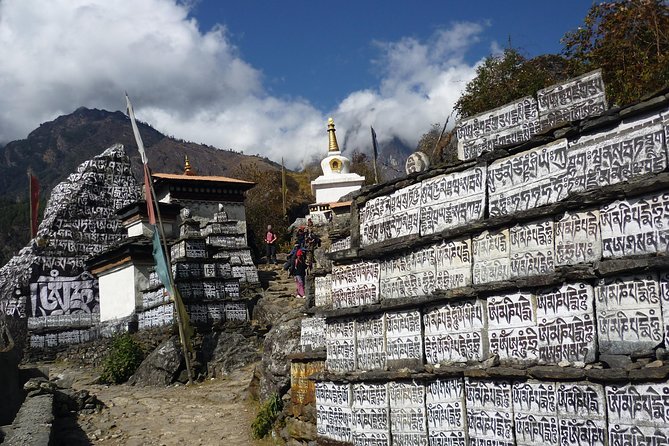
To embark on the Everest Base Camp trek, adventurers must secure the necessary permits beforehand to comply with local regulations and ensure a smooth journey through the breathtaking Himalayan terrain. Permit requirements for this trek typically include the Sagarmatha National Park Entry Permit and the Khumbu Pasang Lhamu Rural Municipality Entrance Permit. These permits are essential for both environmental conservation efforts and to support the local economy.
Plus, trekkers should be prepared for the high altitude conditions by undergoing proper high altitude training to acclimatize to the thin air and reduce the risk of altitude-related illnesses. Acquiring the required permits and being adequately trained for the challenges of high altitudes will contribute significantly to a successful and safe Everest Base Camp trekking experience.
Accommodation Options

For trekkers embarking on the Everest Base Camp adventure, exploring the accommodation options along the route is key to planning a comfortable and enjoyable journey through the Himalayas. Here are some considerations when comparing lodging preferences:
- Tea Houses: Basic accommodations offering shared rooms and communal dining areas.
- Lodges: More comfortable options with private rooms and attached bathrooms.
- Luxury Tents: Some treks offer glamping experiences with comfortable beds and modern amenities.
- Everest Base Camp: Basic tea houses are the norm at base camp, providing a unique experience in the heart of the mountains.
These options cater to a range of preferences, from those seeking a rustic adventure to travelers desiring more comfort during their trek.
Meals and Cuisine
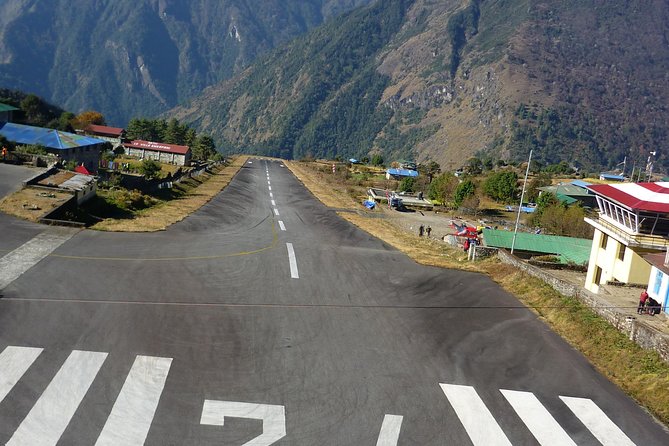
When trekking to Everest Base Camp, adventurers can anticipate a diverse array of meals and cuisine options that cater to various dietary preferences and provide necessary sustenance for the challenging journey ahead. Culinary experiences on this trek are not only about fueling the body but also about enjoying the taste of well-prepared dishes in the midst of the Himalayas. Dining options range from hearty traditional Nepalese meals to familiar international dishes, ensuring there is something for all. The table below outlines some of the common meal options available during the Everest Base Camp trek:
| Breakfast | Lunch | Dinner | Snacks |
|---|---|---|---|
| Oatmeal | Dal Bhat | Sherpa Stew | Energy Bars |
| Pancakes | Sandwiches | Pasta | Nuts |
| Eggs | Fried Rice | Curry | Fresh Fruits |
Difficulty Level
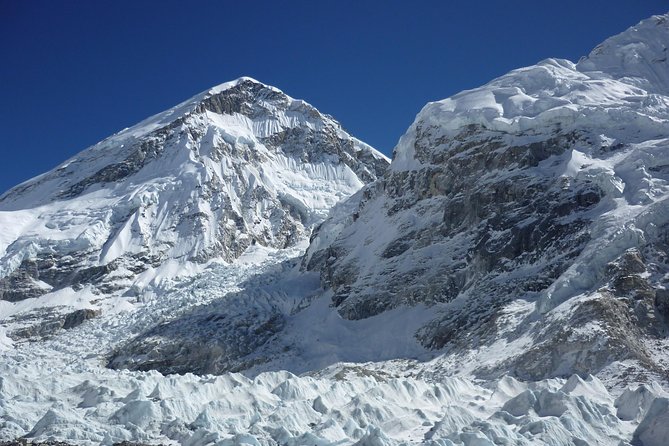
The Everest Base Camp trek presents varying levels of difficulty, challenging trekkers with its rugged terrain and high altitudes.
-
Fitness Level: Trekkers need to be in good physical condition to endure long hours of walking each day and the high altitude effects.
-
Altitude Acclimatization: It’s crucial to acclimatize properly to avoid altitude sickness, with rest days strategically planned in the itinerary.
-
Equipment Checklist: Essential gear includes sturdy hiking boots, warm clothing layers, a sleeping bag rated for low temperatures, and trekking poles for stability.
-
Mental Preparedness: The mental challenge of trekking at high altitudes shouldn’t be underestimated, requiring determination and a positive mindset.
Packing List Essentials
Packing efficiently for the Everest Base Camp trek demands careful selection of essential gear to ensure comfort and safety in the challenging terrain and high altitudes. When considering gear selection, hikers should prioritize items like a sturdy pair of hiking boots, moisture-wicking clothing, a warm sleeping bag, a reliable backpack, and high-quality sunglasses to protect against the sun’s glare at higher elevations.
Layering is key due to the fluctuating weather conditions, so packing thermal base layers, a waterproof jacket, gloves, a beanie, and sunscreen is essential. It’s also crucial to pack a first aid kit, water purification tablets, snacks, and a refillable water bottle to stay hydrated on the trek.
Altitude Sickness Prevention
To prevent altitude sickness while trekking to Everest Base Camp, hikers must acclimate gradually to the increasing elevation by allowing their bodies time to adjust to the reduced oxygen levels. Proper altitude sickness management and acclimatization techniques are crucial for a successful trek.
Here are some key strategies to help prevent altitude sickness:
- Stay hydrated by drinking plenty of water throughout the trek.
- Ascend slowly, allowing for gradual acclimatization to the higher altitude.
- Include rest days in your itinerary to give your body time to adjust.
- Pay attention to your body and symptoms of altitude sickness, such as headaches or dizziness, and communicate any concerns with your guide promptly.
Local Culture Experience
Upon reaching Everest Base Camp, trekkers are immersed in a rich cultural experience, interacting with local communities and witnessing traditional customs firsthand. This culture allows visitors to gain a deeper understanding of the local way of life, including beliefs, rituals, and daily practices. Interactions with Sherpa guides provide insights into their unique traditions, such as prayer flag ceremonies and Sherpa dances. Trekkers may also have the opportunity to visit monasteries along the way, where they can observe Buddhist rituals and teachings. Below is a snapshot of some key cultural experiences and traditions encountered during the Everest Base Camp trek:
| Cultural Experiences | Local Traditions | Impact on Trekkers |
|---|---|---|
| Interacting with Sherpa guides | Prayer flag ceremonies | Gain cultural insights |
| Visiting monasteries | Sherpa dances | Witness traditional customs |
| Learning about Buddhist rituals | Local cuisine tasting | Appreciate local way of life |
Wildlife Encounters
Embarking on the Everest Base Camp trek offers adventurers the chance to encounter diverse wildlife species in their natural habitat, adding an element of excitement and wonder to the journey. While trekking through the Himalayas, trekkers can experience memorable wildlife encounters through:
- Bird watching opportunities along the trail.
- Capturing stunning wildlife photography of rare species.
- Exploring safari options to observe animals in their natural habitat.
- Enjoying unexpected animal sightings like Himalayan Thars or Musk deer.
These encounters provide a unique perspective on the region’s ecosystem, allowing travelers to appreciate the beauty and diversity of the wildlife that thrives in the high altitudes of the Everest region.
Communication and Connectivity
During the Everest Base Camp trek, trekkers can anticipate challenges with communication and connectivity in the remote Himalayan region. Communication challenges arise due to the rugged terrain and limited infrastructure, making traditional methods unreliable.
To tackle these issues, trekkers often rely on satellite devices for remote communication. Satellite phones and messengers provide a vital lifeline in case of emergencies and allow trekkers to stay connected with their loved ones back home. While these solutions come at an additional cost, they offer peace of mind and ensure that help can be summoned when needed.
In such remote areas, where traditional networks falter, satellite devices prove to be indispensable for maintaining communication and ensuring a safe trekking experience.
Emergency Protocols
In the event of an emergency while trekking to Everest Base Camp, trekkers are advised to familiarize themselves with the designated emergency protocols to ensure swift and effective assistance. Here are some key emergency response and safety measures to keep in mind:
- Stay Calm: It’s crucial to remain calm and composed in emergency situations to make sound decisions.
- Contact the Guide: Inform your guide immediately about the emergency to initiate the necessary actions.
- Follow Instructions: Pay close attention to the instructions provided by the guide or local authorities for your safety.
- Use Emergency Equipment: Be familiar with the emergency equipment available and how to use it effectively in case of need.
Being prepared and knowing what to do in emergencies can make a significant difference in ensuring a safe trekking experience.
Trekking Tips and Tricks
When embarking on the Everest Base Camp trek, trekkers can enhance their experience by implementing effective trekking tips and tricks to navigate the challenging terrain with confidence and ease. Proper gear essentials play a crucial role in ensuring a successful trek. Trekking poles can provide stability and reduce strain on knees during descents.
Wearing layers of clothing helps adjust to changing temperatures along the trail. Sturdy hiking boots with ankle support are essential for navigating rocky paths. Staying hydrated and carrying high-energy snacks can help maintain energy levels during long days of trekking.
Utilizing proper techniques like pacing oneself, taking short breaks, and acclimatizing properly can prevent altitude sickness and ensure a safe journey to Everest Base Camp.
Here's a few more nearby tours and experiences we think you'll like.
Frequently Asked Questions
Can I Bring My Own Camping Gear on the Everest Base Camp Trek or Is It Provided by the Tour Company?
Bringing personal gear is usually permitted on treks, but it’s best to confirm with the tour company. They may provide camping equipment, but knowing the fitness requirements and gear policies beforehand ensures a smoother experience.
Are There Any Specific Health Requirements or Fitness Levels Needed to Participate in the Everest Base Camp Trek?
For the Everest Base Camp trek, participants need good fitness levels and should prepare with a training regimen. Health precautions are vital to prevent altitude sickness. It’s recommended to consult a doctor before embarking on this challenging journey.
How Experienced Are the Guides Who Lead the Everest Base Camp Trek and What Languages Do They Speak?
Guides leading the Everest Base Camp trek are highly experienced professionals proficient in multiple languages. They offer insights into local customs and facilitate cultural interactions, enhancing the trekking experience for participants of varied backgrounds and preferences.
Is There a Weight Limit for the Luggage That Can Be Brought on the Trek and Are There Porter Services Available?
Porter services are available, offering assistance with luggage during the trek. While there isn’t a specific weight limit mentioned, it’s advisable to pack light for ease of travel. These services can help make the journey more manageable.
What Type of Insurance Is Recommended for the Everest Base Camp Trek and What Does It Cover?
For the Everest Base Camp trek, travelers are strongly advised to get comprehensive travel insurance. This type of insurance typically covers medical emergencies, trip cancellations, lost baggage, and evacuation services, providing peace of mind during the journey.
Not for you? Here's more of our most recent tour reviews happening neaby
- Upper Mustang Trekking – 15 Days
- Everest Helicopter Tour: Experience the Ultimate Aerial Adventure of a Lifetime
- 12 Days Annapurna Circuit Trek
- Private Half-Day Off-Road Safari in Shivapuri-Nagarjun Park – Kathmandu
- Nepal Multisport Adventure Tour
- 7 Days Honeymoon Tour in Nepal
- Nepal Cultural & Adventure
- Bandipur Homestay Tour
- Tibet Tour With Everest Base Camp – FLY IN DRIVE OUT- 8 DAYS
- Day Hiking Near Kathmandu Valley.
- 4 Days Langtang Valley Short Trek
- 12 Days Everest Base Camp Trek in Nepal
- Lobuche East Peak Climb With Everest Base Camp Trek
- 4-Day Kathmandu Valley UNESCO World Heritage Sites Tour
- UNESCO World Heritage Site Tour in Kathmandu
Final Words
Embark on the Everest Base Camp trek – 15 days for an unforgettable adventure filled with stunning views, culture, and personal triumph.
With expert guides, challenging terrain, and breathtaking vistas, this journey promises to be a once-in-a-lifetime experience.
Whether you’re a seasoned trekker or a first-time adventurer, this expedition will leave you with lasting memories and a sense of accomplishment.
Don’t miss out on this incredible opportunity to conquer the world’s tallest peak.
